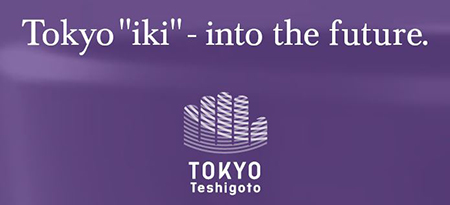Honba Kihachijo
(Hachijojima Silk Fabric)

- The ultimate choice for kimono lovers, woven on a remote island 300 km south of Tokyo.
- Hachijo Island is located in the ocean 300 km south of Tokyo. Authentic Kihachijo (silk fabrics from Hachijo Island) is a range of silk fabrics that are dyed using only colors extracted from indigenous or cultivated plants that grow on this verdant island. Color variants are limited to three types: yellow, black, and reddish-yellow. In the past, yellow was the main color, which was why the name Kihachijo (Ki means yellow) was popular. But, black has now become the preferred color. It is not just any black; this is pure black produced only by Shiinoki (beech tree) pigment, making the dyeing method totally different from others that use indigo for mixing. For black fabric, the manufacturing process includes raw silk dyeing with a liquid made from boiled-down Shiinoki bark, de-watering, and drying outdoors. This process is repeated 40 times to allow the sunshine to impart glossiness to the fabrics. To highlight the unique colors of plants and trees that grow in Hachijo Island’s climate, the designs are very simple; for example, plain, striped, or checked patterns. Once used for casual wear, the material becomes more comfortable on the body the longer you wear it. In recent times, these fabrics have grown rare due to the declining number of manufacturers, and Kihachijo is said to be the ultimate choice for Kimono experts who really know their fabrics.
| Main Areas of Manufacture | Hachijojima (Hachijo Island) |
|---|---|
| Designation/ Certification Date | October 14th, 1977 (National Certification) December 24th, 1982 (Tokyo Certification) |
| Traditionally Used Raw Materials | Pongee thread derived from raw silk, doupion silk and floss silk; or silk thread with similar properties to these classifications. |
Traditional Technologies and Techniques
- Honba Kihachijo (Hachijojima silk fabric) is both a flat woven and twill woven fabric produced using threads that are dyed prior to weaving.
- To drive the weft threads through the weave, a shuttle is used.
- Dyeing of threads is carried out by hand. When dyeing is conducted, plant-derived dyes are used. The yellow color is produced from kobunagusa (scientific name: Arthraxon hispidus Mak.). The orange color is produced from a species of laurel (Machilus thunbergii). The black color is produced from a species of beech (Castanopsis cuspidata var. sieboldii). The mordant used is comprised of wood ash and mud.
History and Characteristics
The birthplace of the silk woven fabrics called "Kihachijo," which are known for being dyed using plant-derived materials, is located approximately 300 kilometers south of Tokyo.
On Hachijojima (Hachijo Island), which arises from the surrounding deep blue waters, cute "daughters of the island" offer calls of "welcome" to island visitors as soon as they arrive at New Year or at festival times. All over the island, tropical plants such as palms, hibiscus and other flowers add color throughout the year.
Long ago, the island was known as "the island that not even birds visit," it being a solitary and remote outcrop arising from the sea. It also played host to a harsh natural environment. However, human ingenuity allowed for the discovery of the unique colors of Kihachijo fabrics. By using the natural plant dyes necessary to produce yellows, oranges and blacks, the island's specialty "Honba Kihachijo" silk fabrics were born.
It is said that Kihachijo's uniqueness lies in both its "dyes" and "weave," these qualities being born of the island's environment. The three core colors are yellow, orange and black, all of them being natural dyes derived from plant-based materials native to the island.
"Hachijo Kariyasu" (or kobunagusa) (scientific name: Arthraxon hispidus Mak.) is used to dye yellows. The bark of a species of laurel called Madami (Machilus thunbergii) is used to dye the browns. The bark of the "Shiinoki," a species of beech (Castanopsis cuspidata) is used for black colors along with mud dyeing in a process unique to the island. Striped fabrics along with checks are woven by hand by combining these three colors together.
One of the features of Kihachijo is that it retains its colors even after many years. Indeed, the more it is washed the more vivid the colors become.
Contact Details
| Manufacturing Area Cooperative Name | Kihachijo Cooperative Association |
|---|---|
| Address | 346-1 Kashitate, Hachijo Town, Hachijojima, Tokyo 100-1621 |
| TEL | 04996-7-0516 |






